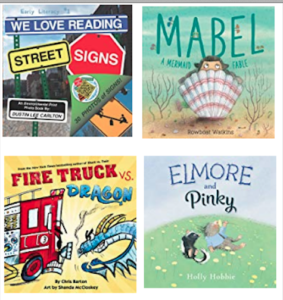The ability to listen, speak clearly, and read and write begins to develop before children go to school and continues throughout their school years. Kindergarten reading instruction includes skillful, step by step instruction in the areas of comprehension, fluency, phonemic awareness, phonics, and vocabulary.

Children involved in hands on activities related to the stories they hear and read, have an enriched understanding and connect to the story characters.
Areas of literacy are:
- Listening and speaking
- Phonemic awareness and reading skills
- Writing skills
- Responding to literature
Kindergarten reading and writing, speaking and listening and responding to literature, come about as children are given opportunities to hear quality literature, to play with letters and words, to engage in activities and experiences about literature, and as they receive specific instruction that increases their awareness of language.
Giving kids plenty of time to investigate everyday things associated with the stories, will lead to more inquiry, knowledge building and provide a meaningful reason to share with drawings and writing.
Emergent Literacy – What is it?
Kindergarten and preschool literacy begins early. Children are said to be emergent readers and writers when they start to develop reading and writing skills.
Reading and writing begins when children begin to:
- pretend to read
- “write” with lines of scribble or letters
- point to words from left to right
- use vocabulary like “letter” and “words”
- recognize a few words and names
- start to understand what rhyming words are
- can name letters and beginning sounds of words
Reading Instruction
Children need instruction to:
- develop an awareness that letters and letter patterns represent the sounds of spoken language
- acquire reading comprehension strategies and apply them to the reading of text
- develop and maintain a love of reading during the learning process
Environmental Print
Words, letters, and numbers are all around us. Taking advantage of them to develop your students’ reading skills is an effortless and easy way to help them focus their attention on the world of print around them.
Through environmental print children begin to sort out that the squiggles on the paper, on signs and packaging mean something, that print is read from top to bottom, from left to right, and that there are spaces between words. They learn that letters represent sounds.
Labelling tubs of math, puzzle, art and other supplies, posting a big print list of student names, and putting relevant posters in the different learning areas of the classroom are all ways of adding meaningful print. Adding name tags to everyday classroom items makes it easy to focus children to find similarities and differences in children’s names.
The following books offer more information on using environmental print to enhance children’s literacy development.
Integrating Environmental Print Across the Curriculum, PreK-3: Making Literacy Instruction Meaningful by Lynn Kirland, Jerry Albridge and Patricia Kuby
Environmental Print for Early Childhood Literacy Skills by Jennifer Prior and Maureen R. Gerard
Everyday Literacy byStephanie Mueller
We Love Reading Streetsigns by Dustin Lee Carlton
Simple beginning assessment for kindergarten reading
Exposure to literature varies with families. Check children individually to evaluate if they:
- can recognize the front and the back of a book
- can identify – what is the title of a book
- can identify – what is a word
- can identify – what is a letter
- can identify where you begin reading on a page
- can identify where you finish reading on a page



